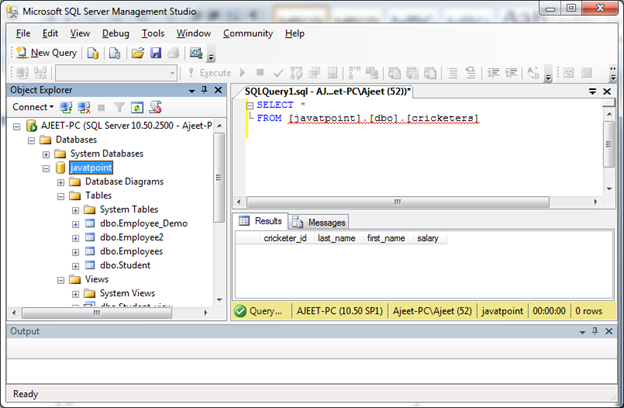

To manage symmetric keys, you can use the tools included in SQL Server to do the following:īack up a copy of the server and database keys so that you can use them to recover a server installation, or as part of a planned migration.
#SQL POUND KEY HOW TO#
Managing encryption keys consists of creating new database keys, creating a backup of the server and database keys, and knowing when and how to restore, delete, or change the keys. A DMK that is not encrypted by the service master key must be opened by using the OPEN MASTER KEY statement and a password. However, this default can be changed by using the DROP ENCRYPTION BY SERVICE MASTER KEY option of the ALTER MASTER KEY statement. The copy of the DMK stored in the master system database is silently updated whenever the DMK is changed. It is stored in both the database where it is used and in the master system database. To enable the automatic decryption of the database master key, a copy of the key is encrypted by using the SMK. It can also be used to encrypt data, but it has length limitations that make it less practical for data than using an asymmetric key.

The database master key is a symmetric key that is used to protect the private keys of certificates and asymmetric keys that are present in the database. For more information about regenerating the SMK, see ALTER SERVICE MASTER KEY (Transact-SQL) and ALTER MASTER KEY (Transact-SQL).
#SQL POUND KEY UPGRADE#
After upgrading an instance of the Database Engine to SQL Server the SMK and DMK should be regenerated in order to upgrade the master keys to AES. AES is a newer encryption algorithm than 3DES used in earlier versions. SQL Server uses the AES encryption algorithm to protect the service master key (SMK) and the database master key (DMK).
#SQL POUND KEY WINDOWS#
The Service Master Key can only be opened by the Windows service account under which it was created or by a principal with access to both the service account name and its password. The service master key can only be decrypted by the service account under which it was created or by a principal that has access to the machine's credentials. The DPAPI uses a key that is derived from the Windows credentials of the SQL Server service account and the computer's credentials. The SMK is encrypted by using the local machine key using the Windows Data Protection API (DPAPI). The SMK is automatically generated the first time the SQL Server instance is started and is used to encrypt a linked server password, credentials, and the database master key in each database. The Service Master Key is the root of the SQL Server encryption hierarchy. SQL Server has two primary applications for keys: a service master key (SMK) generated on and for a SQL Server instance, and a database master key (DMK) used for a database. Applications for SQL Server and Database Keys A public and private key pair is created for each SQL Server instance that stores sensitive data in a database. Public and private keys are created by the operating system and they are used to protect the symmetric key. The key is used by SQL Server to encrypt sensitive data that is stored in SQL Server. The symmetric key is created during SQL Server initialization when you first start the SQL Server instance. In SQL Server, encryption keys include a combination of public, private, and symmetric keys that are used to protect sensitive data.
#SQL POUND KEY PASSWORD#
Asymmetric keys use one password to encrypt data (called the public key) and another to decrypt data (called the private key).

Symmetric keys use the same password to encrypt and decrypt data. SQL Server has two kinds of keys: symmetric and asymmetric. SQL Server uses encryption keys to help secure data, credentials, and connection information that is stored in a server database.


 0 kommentar(er)
0 kommentar(er)
